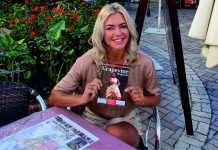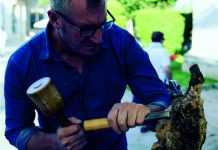
The joint lowest infant mortality rate in the Americas along with Canada; we must of course, be talking about the USA. No, guess again. This is Cuba; the tropical island where music constantly fills the air.
It is very hard to write about Cuba without discussing politics as it the western hemisphere's first communist state. Cuba is held up as a gleaming example of Communism working; this is despite the USA's efforts to keep Cuba down, spending Millions of dollars on propaganda and enforcing embargoes that restrict Cuba ability to buy and sell produce. Should these restrictions be lifted, sales to Cuba would, potentially be significant and could for example, rival Mexico as the largest market for U.S. rice.
The mainland of Cuba is the 16th largest in the world and the recorded history of Cuba began in 1492 when it was sighted by Christopher Columbus, who promptly claimed it for Spain. Spanish colonialism is very evident in Cuba, with many Spanish-looking buildings. Indeed, when I visited at the beginning of 2005, I saw a building that was being refurbished in Havana by the Junta de Andalucia.
There are many package holidays available to Cuba, but for my wife and I, being ferried from one anonymous hotel to another by coach, did not seem to be the way to find the real Cuba (or any other country for that matter). Instead, we arranged a flight in and out of Havana, giving us 2 weeks to explore and try out our Spanish language skills.
Havana is a wonderful city and unlike any other in the world no McDonalds here of course and the crumbling, resplendent architecture allows hours to be lost wandering through the city. Cuba is a very safe city and crime rates are very low due to the very friendly populace and the high-profile police force. A number of times we wandered off the beaten track and were told by people to watch our bags and to be careful.
La Habana Vieja (Old Havana) has been a World Heritage site since 1982 and with its multitude of galleries and museums it is easy to see why. Add to this a walk along the crumbling sea wall of the Malecón, and along El Prado, the tree-lined boulevard where artists sell their wares, not to mention a trip to the old Bacardi building – a wonderful example of Art Deco and you can tell that I could go on
at length about Havana. We stayed for 2 days at a very friendly casa particular (a private house authorised to allow tourists to stay) for $25 a night and then hired a car to tour the rest of the island.
Hiring a car in Havana was not cheap; around £40 per day, but was worth every penny. Of course driving around in a brand new Volkswagen Polo makes you stand out like a sore thumb compared to the stunning 1950's Cadillac's, but this is not a problem. So having forgotten to obtain a map, we set off. Two and half hours (and several arguments) later we were still trying to find our way out of Havana. But eventually we made it and began our journey. Signposts are apparently not the done thing in Cuba, and at one stage we were confronted by a roundabout with five exits and not one sign.
We headed east, taking in the provinces of Cienfuegos, Villa Clara, Sancti Spiritus, Ciego de Avila and Camaguey. Whilst in Sancti Spiritus we visited the town of Trinidad – another example of Spanish architecture with it brightly coloured houses and Playa Ancon, the white-beached resort ideal for some serious relaxation.
One of the highlights of the visit was to the Che Guevara memorial in Santa Clara. Whether you support his political views or not, it is hard not to respect a man who gave up a comfortable middle class existence as a doctor in his native Argentina, to try and do something about the suffering and poverty he saw whilst travelling through Latin America.
Cuba is definitely on our list of “places we want to go back to” and I would not hesitate to recommend it as a holiday destination no matter what you want from a holiday.





















